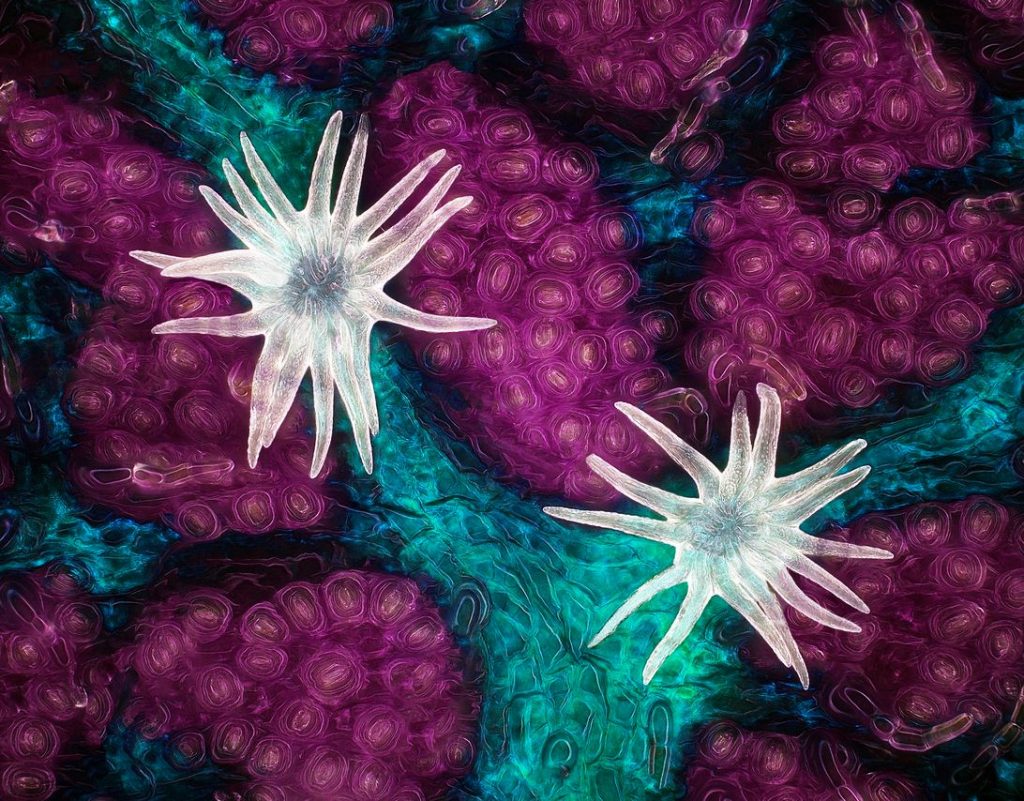Oscar Wilde famously wrote that «life imitates art far more than art imitates life.» Artists, he meant, help us see beauty in the world around us by pointing out beautiful things. Perhaps we love the way water lilies look because of Monet’s wonderful impressionist paintings of them.
By challenging artist-scientists to find beauty in the tiniest of life’s creations — think, snowflakes, insects and neurons — Nikon’s Small World Photomicrography competition might take Wilde’s sentiment to the another level.
After you check out 2021’s winners in the gallery below, I wouldn’t be too surprised if the housefly currently buzzing around your living room starts to strike you as rather dazzling.
From almost 1,900 entries across 88 countries, the competition, now in its 47th year, selected a stunning top 20. The first place photo captures translucent white appendages blooming over violet pores of a cyan oak leaf. To get the shot, winner Jason Kirk magnified the leaf by 60 times. Sixty times! Imagine pinching into and fully zooming your iPhone photos 60 separate times, but having the image remain ultra-focused.
«The lighting side of it was complicated,» Kirk said in a statement. «Microscope objectives are small and have a very shallow depth of focus. I couldn’t just stick a giant light next to the microscope and have the lighting be directional. It would be like trying to light the head of a pin with a light source that’s the size of your head. Nearly impossible.»
Other winning images include one that shows neon green wispy strings around a mouse’s sensory neuron that make the cell resemble a glow-in-the-dark jellyfish. One displays a second mouse’s 3D brain vasculature reminiscent of a winter wonderland, and the forest of vessels fits perfectly with another artist’s winning image — a single, crystal clear snowflake that showcases nature’s ability to create perfect symmetry.
These pictures could easily hang next to the abstract art pieces found in The Whitney and spark discussion of color theory and surrealism. Even if you aren’t a science lover, it’s hard not to stare at these unique pieces of art. They help us peek into worlds that, typically, are all but invisible.
